The 2024 Hyundai Kona is already reaching dealerships, while the Kona Electric version, Hyundai says, won’t arrive until late fall.
You should wait, because the EV version of Hyundai’s small utility vehicle is hands-down the best of the bunch.
We had two brief stints in a prototype Kona Electric in the rolling Maryland horse country outside Baltimore last week. Even from that limited drive, it was clear the electric Kona is smoother and quieter, and that it accelerates as well as the most powerful gasoline version.
The new Kona joins a handful of other vehicles offered with either gasoline or electric powertrains—many of them BMWs—in which the EV is clearly better. Those include the ultra-luxury BMW i7 against either of its gasoline 7-Series brethren.
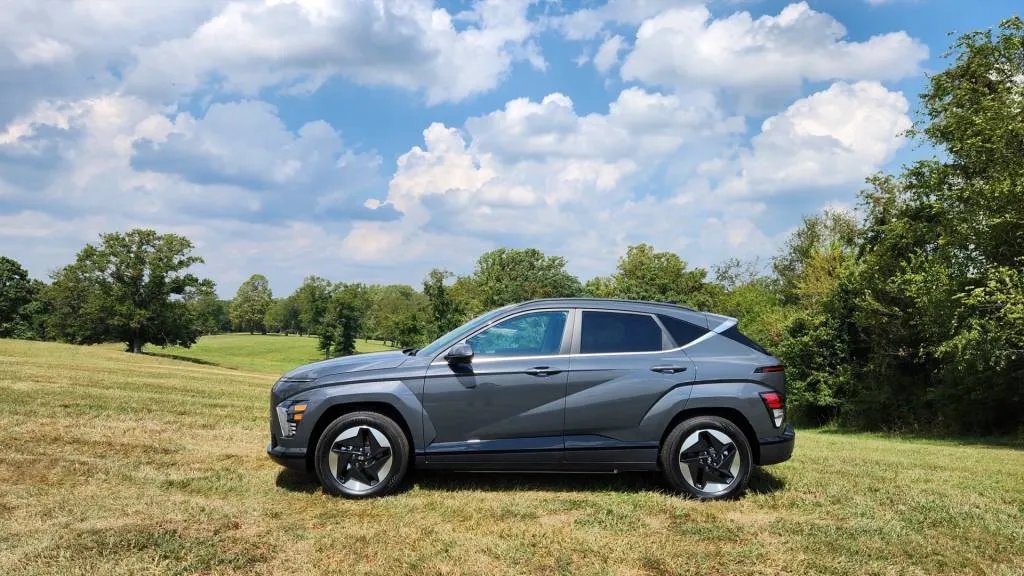
2024 Hyundai Kona Electric
The wild card here—and how the 2024 Hyundai Kona Electric measures up versus EV rivals—is price. Slotting just above the more bare-bones Venue, the Kona is essentially the compact entry vehicle in the Hyundai lineup for the growing number of SUV buyers who won’t consider its Elantra sedan. The new gasoline Konas start at $25,435, or $2,200 higher than last year, and run to roughly $33,000.
The 2023 Kona Electric was priced at a whopping $11,000 over its gasoline counterparts. Applying a similar difference, the 2024 Kona Electric could start at $36,500 or more—near Tesla Model 3 territory. But a new base-battery version could provide something closer to a rival to the Chevrolet Bolt EV and Nissan Leaf.
Pricing for the EV won’t be released until later this fall, so it’s wait-and-see speculation until then.
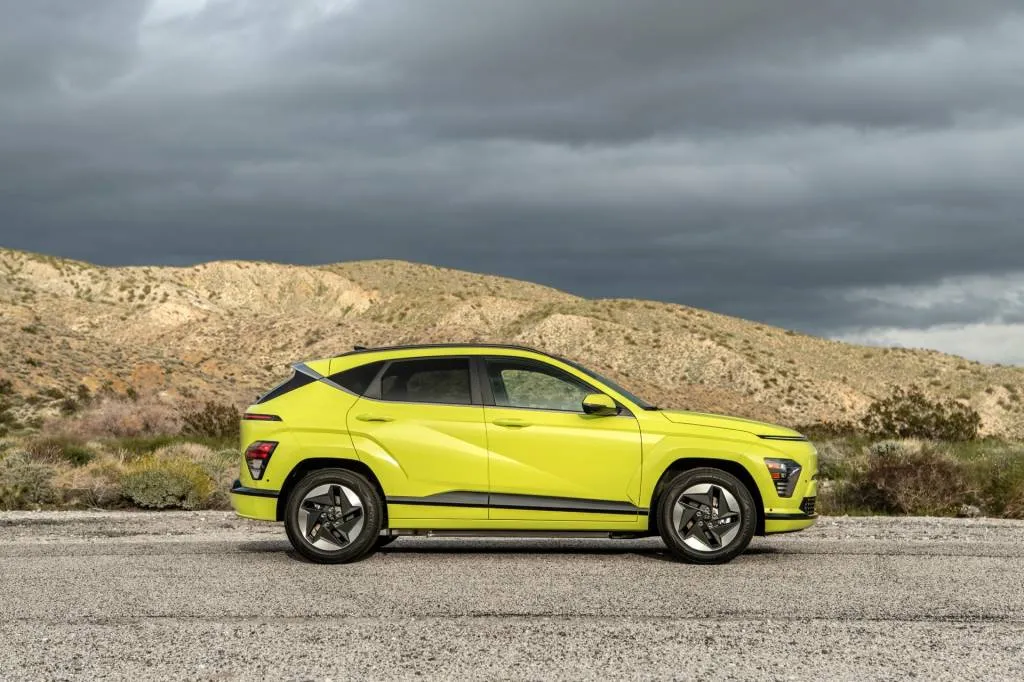
2024 Hyundai Kona Electric
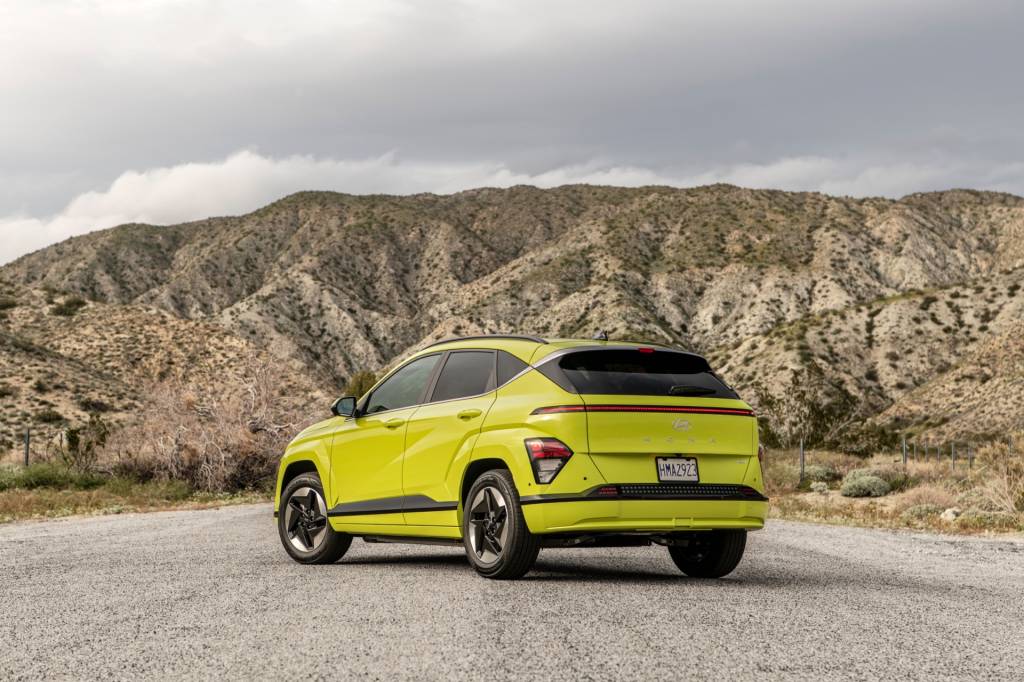
2024 Hyundai Kona Electric

2024 Hyundai Kona Electric
Is it an EV? Hard to tell
From the outside, the only big tell that a 2024 Kona lacks a combustion engine is at the nose. Both powertrains have the same thin “seamless horizon” band of light running from side to side just below the hood edge. On the EV, they’re made up of dozens of tiny pixels—as are the rear lamp and the lower bumper edges.
The exaggerated wheel arches are body-color in the EV, versus contrasting black in the gasoline Kona, and the grille in the latter version for air to pass through to the radiator is blanked off. A manually operated charge-port door sits high on the left side of the nose, and there’s a shallow compartment under a black plastic cover that serves as a front trunk to store the portable charging cord.

2024 Hyundai Kona Electric
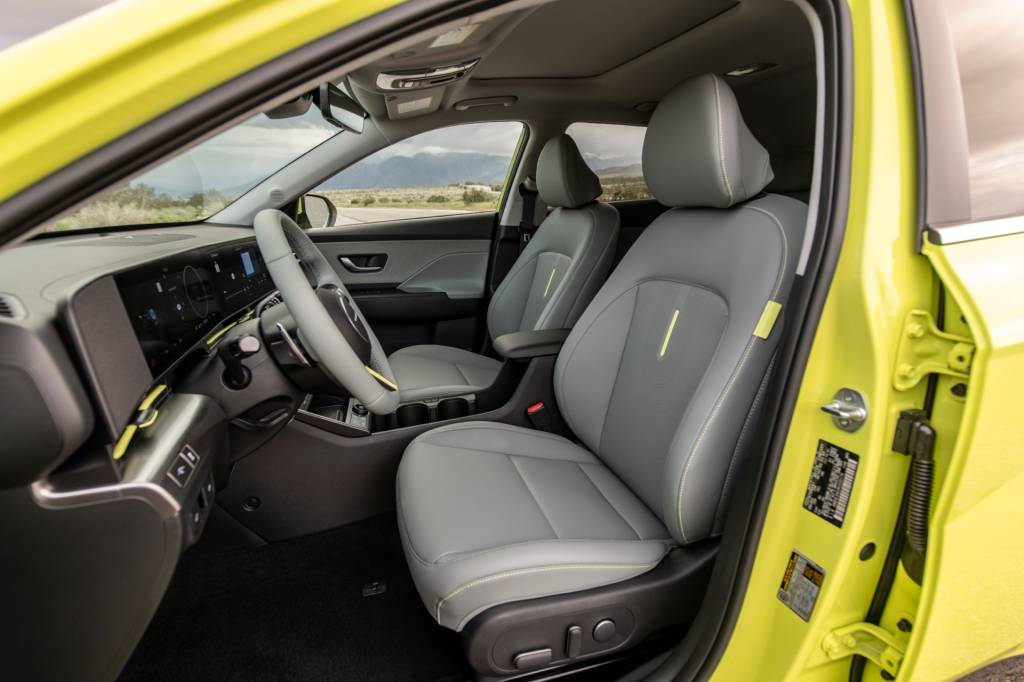
2024 Hyundai Kona Electric

2024 Hyundai Kona Electric
Inside, the two cars share almost all interior fittings. Both versions now have a twist selector for drive, for instance, on the right side of the steering column behind the wheel. Naturally the Electric has additional screens for info and settings within the same twin 12.3-inch horizontal displays.
Kudos to Hyundai for providing a flat rear floor in the 2024 Kona Electric, making occasional third passengers in the rear seat markedly more comfortable. It’s a small touch, but in a car this size, it makes a difference. There’s 3.0 inches more rear-seat legroom than last year too.
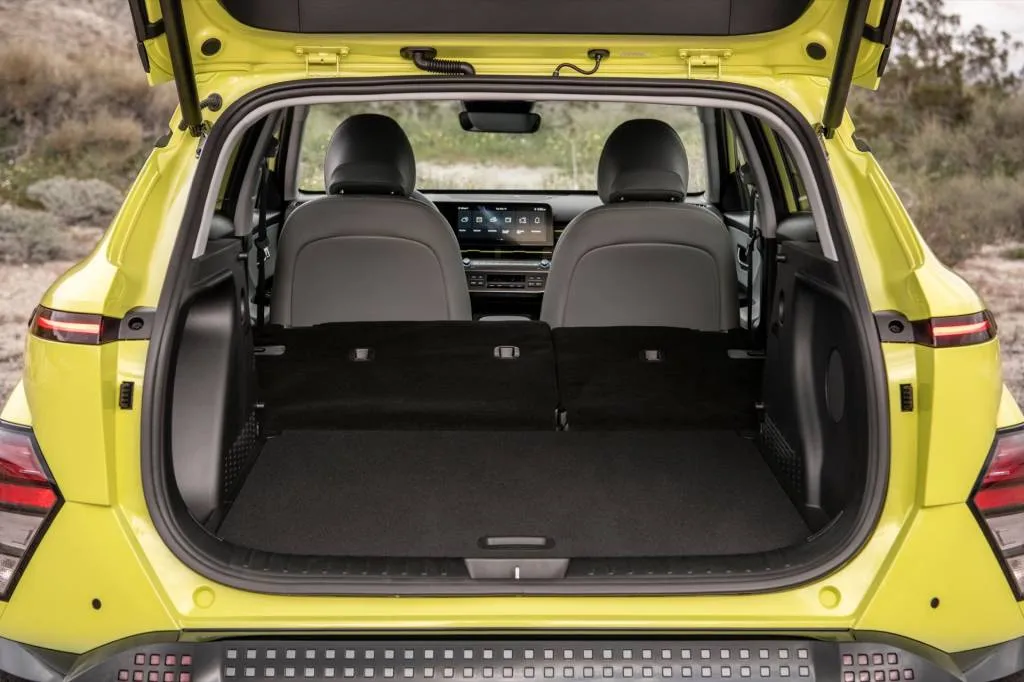
2024 Hyundai Kona Electric
Colors differ: Six paint shades are shared among both powertrains, including the inevitable white, silver, charcoal, and black, plus a green and a yellow. But the Kona Electric is the only model to offer Meta Blue, a silvery-blue tone—and the EV offers no reds at all. A unique interior Sage Green leatherette is unique to the Limited trim on the Kona Electric.
Two Kona EV battery sizes
For the second-generation Kona Electric, Hyundai offers two battery capacities: the Standard Range version has 48.6 kwh, while the Extended Range model has 64.8 kwh. Ranges differ, of course: Hyundai projects a 200-mile EPA combined rating for the Standard, and 261 miles for the Extended. Note the latter is 2 miles more than the 2024 Chevy Bolt EV.
Mechanicals are similar, but motor power is software-limited with the smaller battery. That’s rated at 133 hp (99 kw) while the Extended Range gets a boost to 201 hp (150 kw).
Dean Schlingmann, a hybrid and EV powertrain engineer at the drive event, was part of the team that designed a new generation of drive motor for the 2024 Kona Electric. He told Green Car Reports the motor in the previous generation provided substantial peak power at 3600 rpm, but its output fell away at higher motor speeds. Hyundai’s engineers deliberately shaved peak output in the new motor to extend the power curve to 6000 rpm, sustaining power delivery at higher speeds—and gained 1-2% efficiency in doing so.
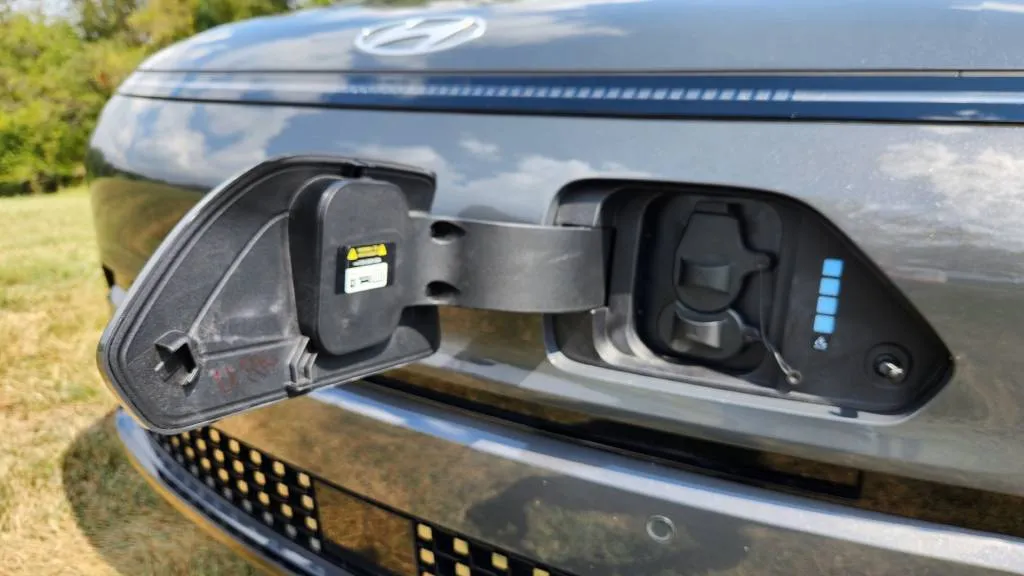
2024 Hyundai Kona Electric
Only the front wheels are driven; unlike gasoline Konas, all-wheel drive is not an option on the Kona Electric. For that, in the Hyundai EV lineup, you have to move up to the larger Ioniq 5, likely at least $10,000 more for comparably equipped vehicles.
The onboard charger can now operate at 11 kw, versus 7.2 kw last year, cutting Level 2 charge time for the larger pack from to 6 hours, from last year’s 9.5 hours. The peak fast-charging rate rises to 85 kw from 75 kw, though a 10-80% charge of the large pack still takes 40 minutes or more.
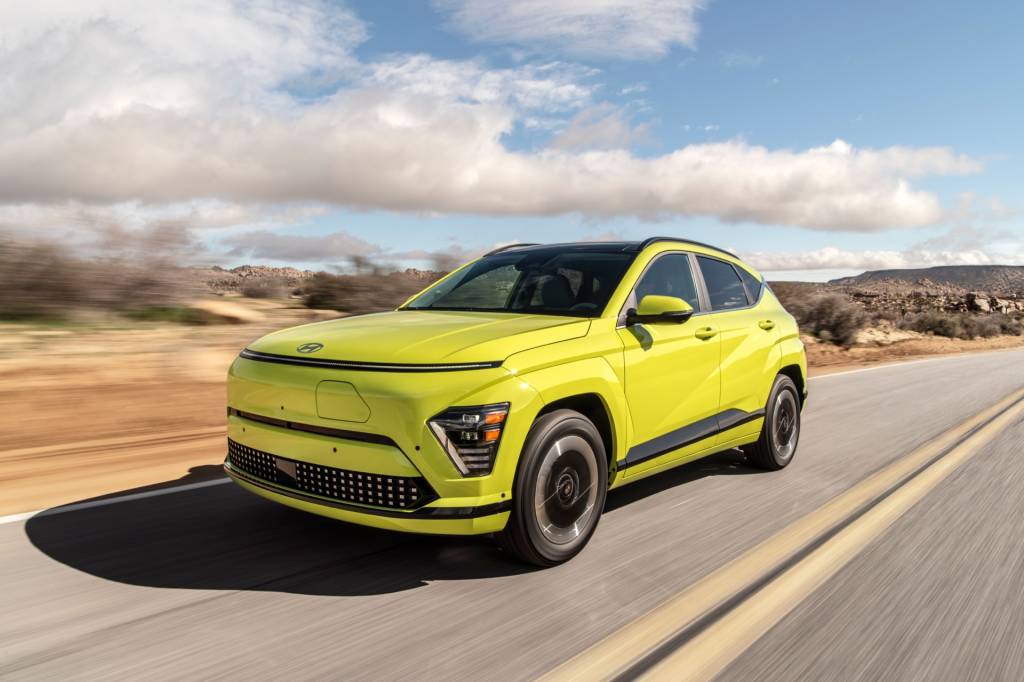
2024 Hyundai Kona Electric
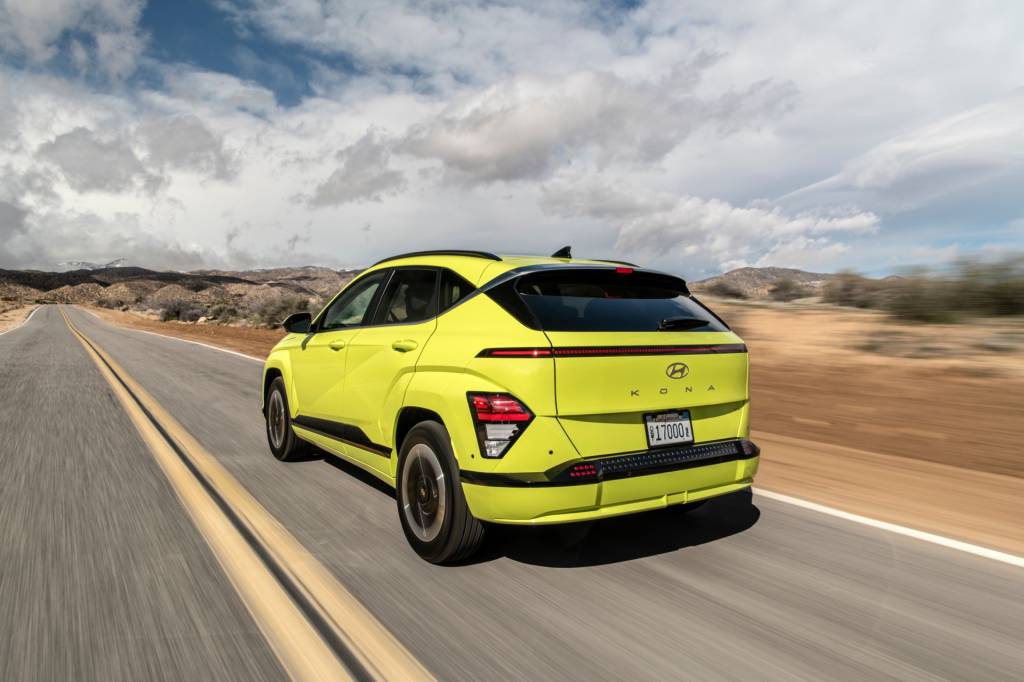
2024 Hyundai Kona Electric
Kona EV driving impressions: Suitably swift
Hyundai had only two prototype Kona Electrics, both Extended Range, at the launch event. Short 10-minute loops were additionally complicated by seven police cars from various jurisdictions that had entirely closed a key crossroads nearby. We drove for one loop, then rode along with another driver for the second.
It’s immediately clear the Kona Electric is more pleasant to drive than the 1.6T, with its turbocharged 1.6-liter turbo-4 and 8-speed automatic. The gasoline car is rated at 190 hp (at 6000 rpm), but under most circumstances, it requires a handful of downshifts to access passing power, while the turbo spools up. This results from tuning the car (and choosing tall gear ratios) to meet increasingly stringent fuel-economy requirements while still providing the get-up-and-go to keep up with fast traffic.
The Kona Electric, on the other hand, delivers instant power from the first push of the accelerator, pretty much like any EV. From the driver’s seat, it’s linear power; this isn’t a speed demon, let alone the kind of car that delivers kick-you-in-the-kidneys acceleration. It’s suitably swift without being a speed demon, and the accelerator response is clearly less peaky than it was in the previous generation—just as Schlingmann told us.
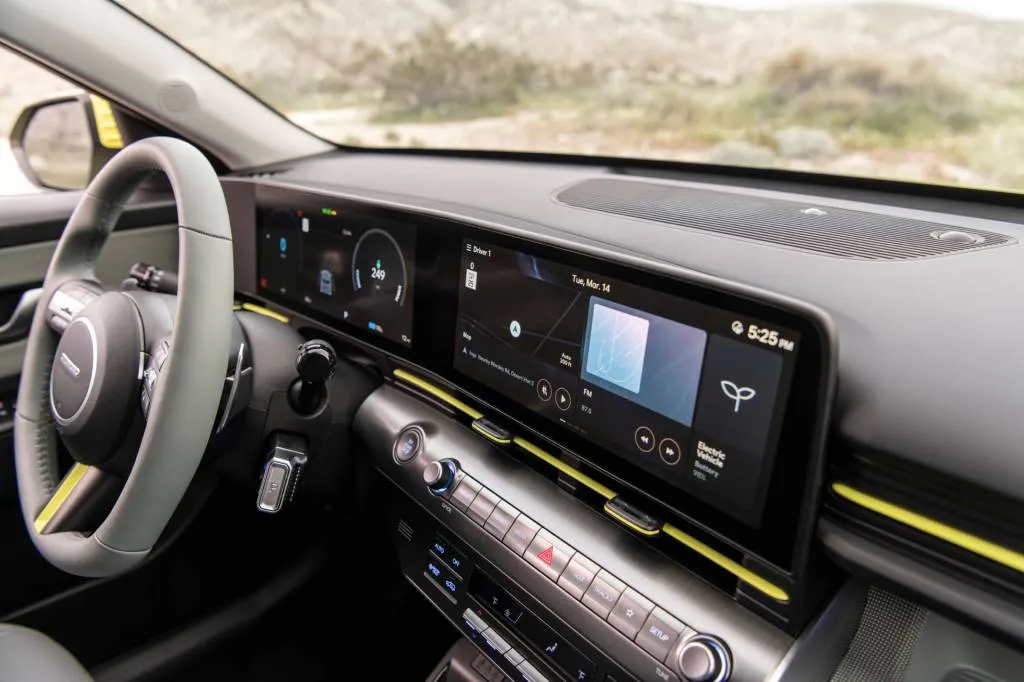
2024 Hyundai Kona Electric

2024 Hyundai Kona Electric
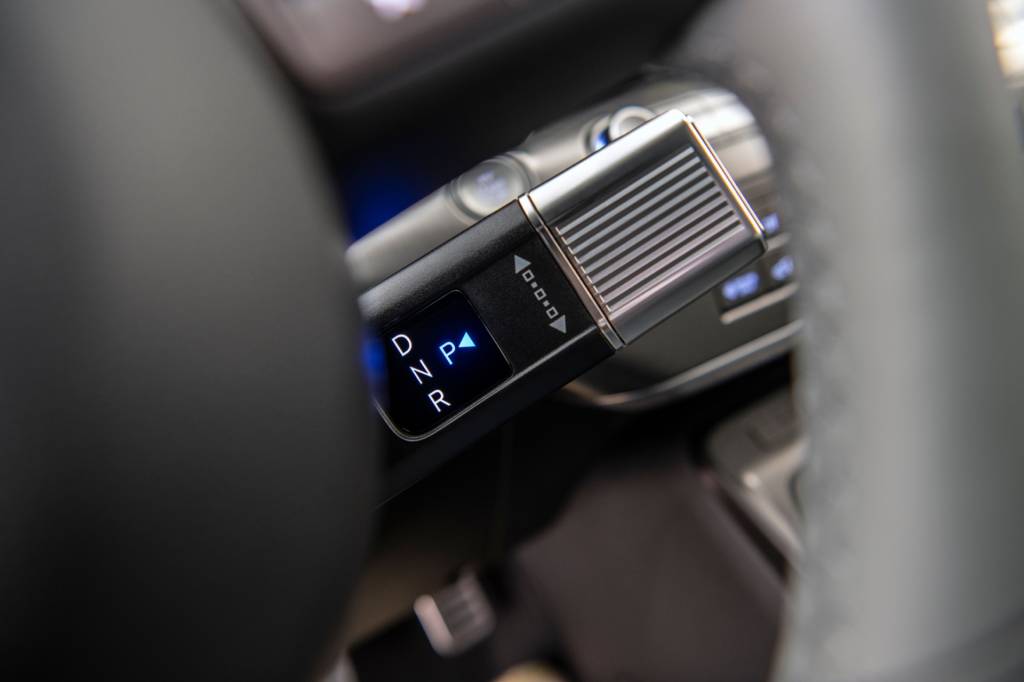
2024 Hyundai Kona Electric
On the road, the electric Kona feels more solid, and with the battery pack under the cabin lowering the center of gravity, it holds the road and corners well. According to Schlingmann, the weight difference between electric and ICE versions of the SEL trim is a mere 250 pounds—but the EV feels more substantial than such a slight difference on a 3,100-pound car would suggest.
As always, the driver has to invoke the i-Pedal one-pedal driving mode after every single power cycle—an annoyance when rivals like the Bolt EV “latch” it through ignition on/offs. In i-Pedal mode, however, the 2024 Kona Electric no longer requires the driver to brake below about 5 mph. Instead, it will slow the car right down to a stop—a major improvement for those who prefer one-pedal operation.
Depending on pricing, we’d expect the Extended Range to be the more popular of the pair, with the Standard’s role being to offer an attractive starting price at a lower trim level. Expect more clarity when more details on trim and pricing are available closer to its on-sale date.
–
Hyundai provided train fare, lodging, and meals to enable Green Car Reports to bring you this first-person drive report.

